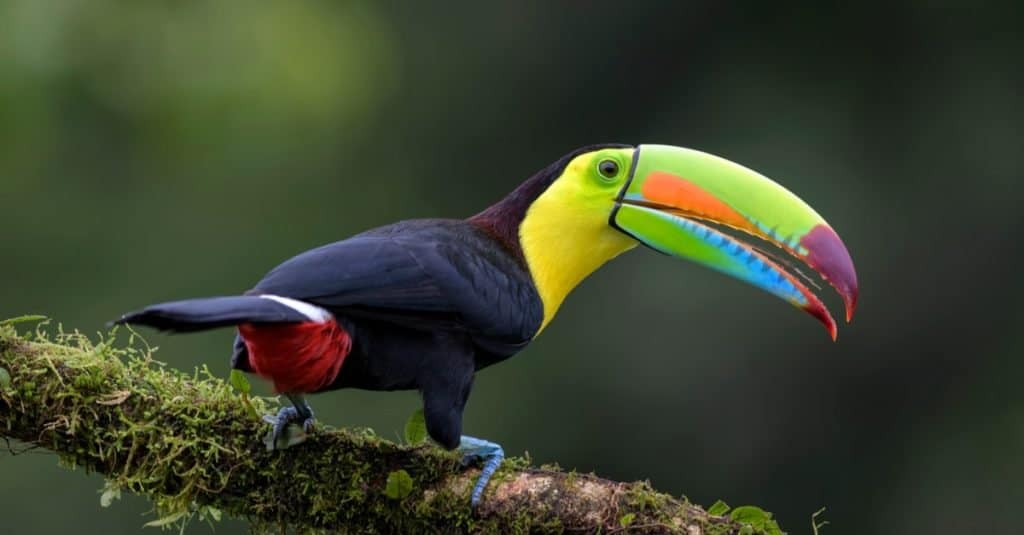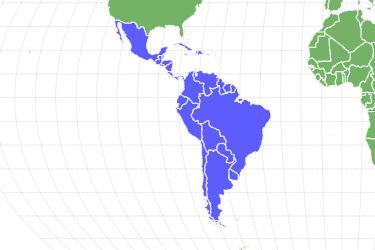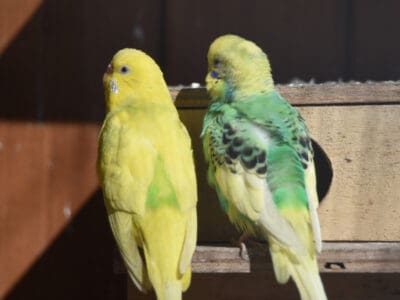Toucan
.jumbotron {
background-image: url(“https://a-z-animals.com/media/Toucan-Plate-billed-400×300.jpg”);
}
}
@media only screen and (min-width: 641px) and (max-width: 920px) {
.jumbotron {
background-image: url(“https://a-z-animals.com/media/Toucan-Plate-billed-470×370.jpg”);
}
}
@media only screen and (min-width: 921px) {
.jumbotron {
background-image: url(“https://a-z-animals.com/media/Toucan-Plate-billed.jpg”);
}
}
Toucan
A toucan’s bill can be equal to one third of the length of its body.
Toucan Scientific Classification
Read our Complete Guide to Classification of Animals.
Toucan Conservation Status
Toucan Facts
- Main Prey
- Fruit, Eggs, Insects
- Fun Fact
- A toucan’s bill can be equal to one third of the length of its body.
- Distinctive Feature
- Small body and enormous colourful beak
- Wingspan
- 43-60 inches
- Incubation Period
- 17-18 days
- Habitat
- Lowland rainforest and tropical forest borders
- Predators
- Human, Weasels, Large Birds
- Diet
- Omnivore
- Lifestyle
-
- Solitary
- Favorite Food
- Fruit
- Type
- Bird
- Average Clutch Size
- 3
- Slogan
- There are more than 40 different species!
- Nesting Location
- Hollows of trees
- Age of Molting
- 1 year
This post may contain affiliate links to our partners like Chewy, Amazon, and others. Purchasing through these helps us further the A-Z Animals mission to educate about the world’s species..

Spiders that fly! Fish that walk! And 1000+ more incredible animals. Discover them all for FREE
.photo-gallery {
–margin: 0px auto 0px;
–padding: 0px 0px 0px 0px;
}
.gallery-link {
background-image: url(“https://a-z-animals.com/media/Toucan-Plate-billed-1024×535.jpg”);
background-repeat: no-repeat;
background-size: cover;
background-position: center;
height: 500px;
justify-content: center;
text-align: center;
align-items: center;
display: flex;
border: 2px solid #000;
}
.gallery-link img {
height: 50%;
}
@media only screen and (max-width: 768px) {
.gallery-link {
height: 300px !important;
}
}
View all of the Toucan images!
“A toucan’s frog-like squawk can be heard a mile away”
A toucan bird’s curved, colorful beak makes it hard to overlook. They are omnivores eating insects, eggs, and fruit. These birds can live up to 20 years in the wild. They live in the tropical forests of South America as well as in Central America.
See all of our expert product reviews.
4 Amazing Toucan Facts!
- Toucan birds are poor fliers
- A toucan’s beak is hollow
- A toucan’s tongue is similar to a feather that pushes food down its throat
- Five or six toucans can huddle together in one hollow tree
Where to Find the Toucan
Toucan birds are found in tropical forests in South America and Central America. Specifically, they live in Bolivia, Brazil, Argentina, French Guiana, Peru, Paraguay, Uruguay, Guyana, and Suriname. The channel-billed toucan lives in Trinidad. These birds live in warm climates with a high amount of rainfall. Normally, they remain in the highest parts of the trees called the canopy. They can live in mountainous areas as well.
button.pulse {
transform: scale(1); animation: pulse 2s infinite;
box-shadow: 0 0 0 0 rgba(11, 247, 25, 1);
}
@keyframes pulse {
0% { transform: scale(0.90); box-shadow: 0 0 0 0 rgba(11, 247, 25, 0.5); }
60% { transform: scale(1); box-shadow: 0 0 0 15px rgba(11, 247, 25, 0); }
100% { transform: scale(0.90); box-shadow: 0 0 0 0 rgba(11, 247, 25, 0); }
}
Costa Rica is a popular place for bird lovers to observe these birds. The keel-billed toucan, scientific name Ramphastos sulfuratus, can be seen in the Cartago, Turrialba, and Monteverde mountains. They are usually found at an elevation of 1600 to 5000 feet.
Carara National Park, Cano Negro Wildlife Refuge, and Tortuguero National Park are other places to see keel-billed toucans and other species of this colorful bird at any time of the year.
Having an experienced, local guide along can help you tour spots that are most likely to have gatherings of toucans.
Toucan Nests
Toucan birds make nests in small holes high up in hollow trees. They sometimes put a thin layer of grass or regurgitated seeds inside the hole as a lining for the nest. Toucans don’t make holes in trees. Instead, they make their nests in holes created by woodpeckers or other animals.
Health and Entertainment for your Toucan
See all of our expert product reviews.
Toucan Scientific Name
The common name of this bird is toco toucan. Its scientific name is Ramphastos toco. When divided up the Greek word Ramphastos means curved beak (ramphos), citizen (astos). This bird usually goes by the simple name toucan.
It belongs to the Ramphastidae family and the class of Aves.
There are 35 species of toucan. Some examples include:
- Yellow-throated toucan
- Channel-billed toucan
- Chestnut mandibled toucan
- Keel-billed toucan
Toucan Size, Appearance & Behavior
The most notable feature of the bird is its beak. One look at this bird’s skeleton reveals a hollow beak with thin bones supporting it. Furthermore, it has pointy edges like a serrated kitchen knife. This allows toucans to bite into tough fruit and other items of food. In terms of color, this bird’s beak can be a mixture of yellow, orange, green, blue, red, and black depending on its species. A smaller predator seeing this bird’s large and colorful beak may not want to approach it.
The feathers on this bird’s body are mostly black with splashes of blue, yellow, and red in different areas. As an example, a keel-billed toucan has black feathers on most of its body, a yellow chest, and red tail feathers. Plus, their feet are blue! As a note, the bird has two toes pointing forward and two facing backward. This design helps them to hang onto branches. Plus, their unique feet allow them to easily jump from one branch to the next.
These birds can measure up to 25 inches long with a beak that can be 7.5 inches in length. Study the skeleton of the average-sized toucan and you’ll see its beak is equal to about one-third of the size of its body. Some species of this bird weigh up to 9 pounds. Their wingspan runs from 43 to 60 inches.
It may seem like its brightly colored beak and feathers would make this bird vulnerable to predators in a forest habitat. However, tropical vegetation can be colorful as well. Consequently, these birds can blend into their habitat and avoid predators.

David Havel/Shutterstock.com
Toucan Migration Pattern and Timing
These birds don’t migrate. They are called resident breeders meaning their breeding season takes place in the same region where they live year-round. Breeding for these birds takes place in the spring.
Toucan Diet
The diet of the bird is classified as omnivorous. But some scientists refer to them as frugivores because their main diet is fruit.
What do toucans eat?
Along with fruit, they eat insects, amphibians, and small reptiles. Also, toucans are known to eat eggs and hatchlings stolen from the nests of other birds. This stealing behavior classifies them as an opportunistic feeder. When they see the opportunity to take food, they do!
Due to their diet of fruit, these birds play an important role in the ecosystem. After eating fruit, they leave behind seeds in their waste causing more vegetation to grow.
Toucan Predators and Threats
Though its beak is large, this is a relatively small bird which means it has a collection of predators in its habitat.
What eats toucans?
Jaguars, coatis, snakes, and eagles are predators of the bird. Not coincidentally, all of these animals have access to the treetops where toucans live.
Another threat faced by these birds is habitat loss due to deforestation. Plus, they are sometimes captured as pets. These animals usually die when kept in households as pets. They need special care and were never meant to be pets.
The conservation status of the toco toucan is Least Concern with a decreasing population.
Toucan Reproduction, Babies and Lifespan
The breeding season of these birds takes place in the springtime. One of the most interesting facts about this bird is its mating ritual. This ritual involves a male and female tossing a piece of fruit to each other.
The birds lay from 2 to 4 eggs per year. The mother and the father take turns sitting on the nest. The incubation period of the eggs ranges from 15 to 18 days. The babies, also called chicks, are born without feathers and are unable to see. Their eyes open at about 3 weeks old. The chicks stay with their parents for 6 to 8 weeks.
These birds are sexually mature at 3 to 4 years old and can live up to 20 years.
Toucan Population
The population of these birds is unknown. However, according to the IUCN Red List of Threatened Species, this bird is described as ‘fairly common’ in its environment.
The conservation status of the toco toucan is Least Concern with a decreasing population.
View all 74 animals that start with T
Toucan FAQs (Frequently Asked Questions)
Are Toucans herbivores, carnivores, or omnivores?
Toucans are Omnivores, meaning they eat both plants and other animals.
What Kingdom do Toucans belong to?
Toucans belong to the Kingdom Animalia.
What class do Toucans belong to?
Toucans belong to the class Aves.
What phylum to Toucans belong to?
Toucans belong to the phylum Chordata.
Do toucans migrate?
No. Toucans are known as resident breeders. This means they breed in the same area where they live year-round.
How many eggs does a toucan lay?
A toucan lays 2 to 4 eggs. They have young once per year.
How fast does a toucan fly?
This is a tricky question! One of the most important facts to remember regarding toucans is they are not known for their long-distance flying skills. When they do fly, they only travel short distances. These birds prefer to hop from branch to branch.
What is a toucan’s wingspan?
The wingspan of a toucan is 43 to 60 inches.
When do toucans leave the nest?
Toucans stay with their parents in the nest until they’re 6 to 8 weeks old.
What eats toucans?
Toucans have a few predators including jaguars, coatis, snakes, and eagles.
What does a toucan eat?
Toucans are omnivores eating fruit, insects, amphibians, and small reptiles. They are also known to steal eggs and hatchlings out of the nests of other birds.
Can toucans fly?
They can fly very short distances. But they prefer to hop to other branches.
Where do toucans live?
These birds live in South America and Central America. Bolivia, Brazil, Argentina, French Guiana, Peru, Paraguay, Uruguay, Guyana, and Surinam are all places where you’ll find toucans. They live in a tropical forest habitat.
Costa Rica is home to six species of toucan including the keel-billed toucan.
The channel-billed toucan lives in Trinidad.
Why is a toucan’s beak so big?
A toucan’s large beak can discourage some predators from attacking. In addition, it uses its large, strong beak to break up tough pieces of fruit. Study the skeleton of a toucan and you’ll see its beak has serrated edges making it a convenient tool when eating.
The length of this bird’s beak allows it to reach up into trees to grab fruit growing from high branches.
What family do Toucans belong to?
Toucans belong to the family Ramphastidae.
What order do Toucans belong to?
Toucans belong to the order Piciformes.
What type of covering do Toucans have?
Toucans are covered in Feathers.
What genus do Toucans belong to?
Toucans belong to the genus Ramphastos.
What are some distinguishing features of Toucans?
Toucans have small bodies and enormous, colorful beaks.
What is an interesting fact about Toucans?
There are more than 40 different species of Toucan!
What is the lifespan of a Toucan?
Toucans can live for 12 to 20 years.
How do Toucans have babies?
Toucans lay eggs.
Sources
- Animal Diversity Web, Available here: https://animaldiversity.org/accounts/Ramphastos_toco/
- Sea World, Available here: https://seaworld.org/animals/facts/birds/toco-toucan/
- Wikipedia, Available here: https://en.wikipedia.org/wiki/Toucan

















